Persian Tahdig (Crispy Rice Recipe)
This tahdig recipe is a beloved Middle Eastern dish that will change the way you look at rice forever. Fluffy, saffron-infused basmati rice is steamed atop a crispy crunchy layer of buttery rice. The whole dish then gets inverted to reveal the sensationally savory tahdig layer on top.
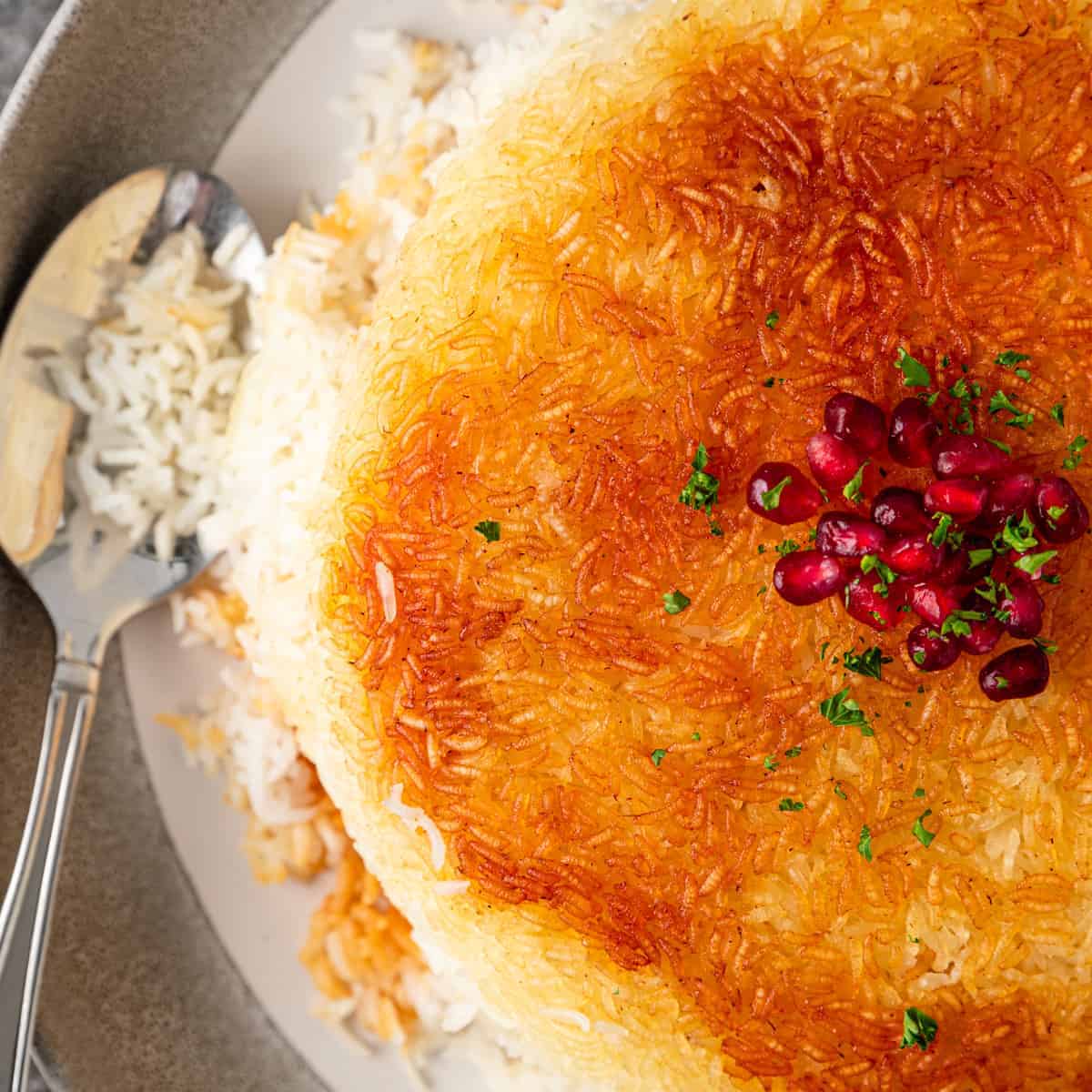
I first encountered this dish from a neighborhood Middle Eastern market in San Diego years ago. What was this crispy shard laying on top of my kebabs? One bite and it got me hooked for this special part of the rice served along side the Beef and Lamb Koobideh Kabobs!
Watch the Recipe Video: How To Make Tahdig Rice
Want to watch the making of the Persian crispy rice, from start to finish? Watch the video located in the recipe card below!
Looking for a new way to jazz up your rice routine? This Persian recipe for tahdig (pronounced Ta-DEEG) is going to rock your world! Using only a handful of simple ingredients, we transform humble rice into a crispy, crunchy masterpiece.
The technique used to make tahdig might be new to you, but don’t worry — you’ll get the hang of it in no time. Once you master this basic recipe, you can craft your own version! There are Persian crispy rice recipes that include everything from fresh herbs and chopped veggies to pomegranate seeds, orange zest, and much more.
For more creative rice recipes, check out my Persian Saffron Rice with Apricot, Crispy Tachin Saffron Rice, or this Sizzling Rice Soup.

INGREDIENT NOTES AND SUBSTITUTIONS
- Basmati Rice – For a true Persian tahdig, stick with basmati rice for this recipe.
- Ghee – Ghee, or clarified butter, has all the rich taste and texture of butter with the added bonus of having a higher smoke point.
- Saffron – Adds a delicate floral flavor and beautiful golden color. For an affordable alternative that will still give you the golden hue, try a few pinches of turmeric powder.
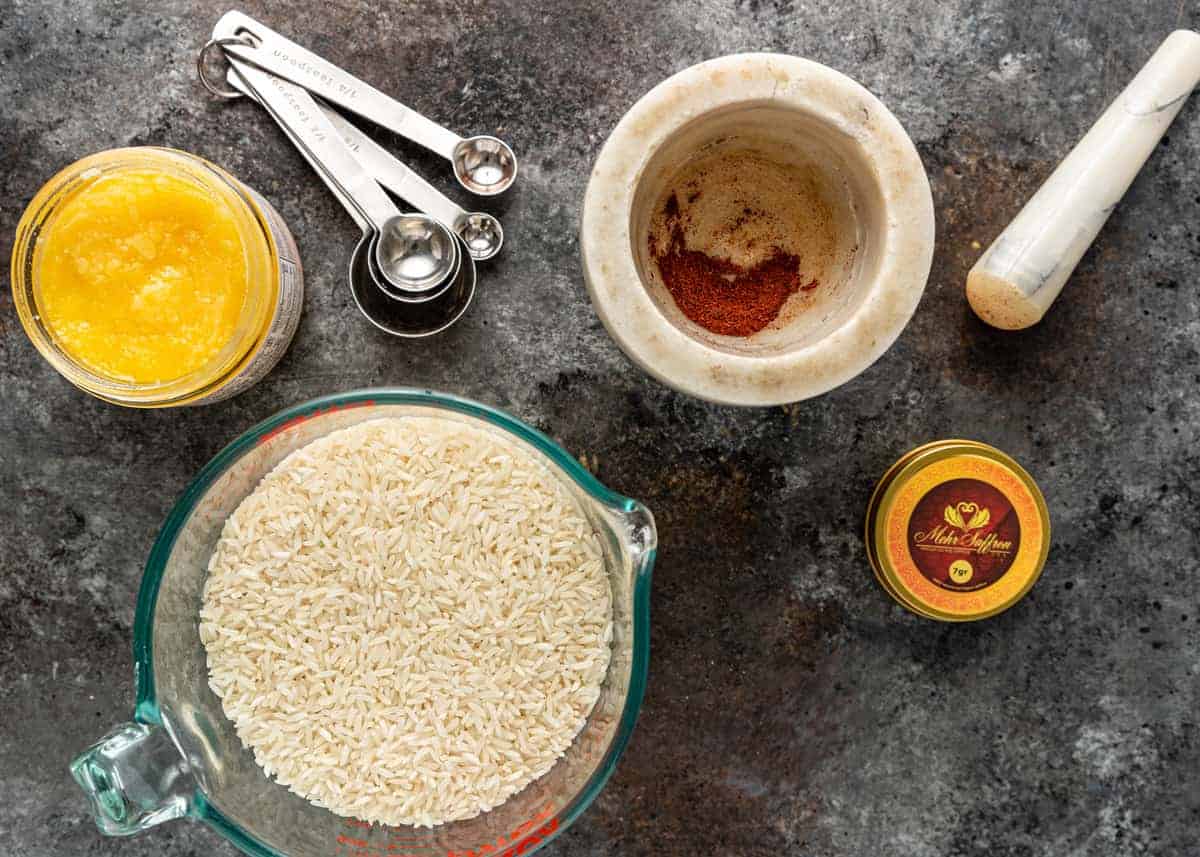
HOW TO MAKE PERSIAN TAHDIG
1. Steep the Saffron. Grind the saffron to a powder using a mortar and pestle. Mix with ¼ cup warm water and set aside to steep and bloom.
2. Wash & Soak the Rice. In a medium bowl, swish the rice with cold water and drain. Repeat until the water is clear. Then, soak the grains in a mixture of 5 cups cold water and 2 tablespoons salt for 30 minutes.
3. Boil the Rice. Bring 12 cups of water to boil in a large stock pot or Dutch oven. Add ¼ cup of salt to the boiling water. Drain the soaked rice and transfer it to the pot, then boil it for about 4 minutes. Set a timer for 5 minutes as soon as you see the first rice grain rise to the top.
4. Drain & Rinse. Drain the rice in a colander, quickly rinse with lukewarm water, and set aside.
5. Melt the Ghee. Over medium-low heat, melt together 2 tablespoons of the ghee with the olive oil and 1 tablespoon of saffron water. Gently swirl the pan to coat the entire bottom and a bit up the sides.
6. Build the Tahdig. It is time to work quickly! With the first sizzle of the oil, add enough rice to cover the entire bottom of the pan with a thin layer of rice. Use a spatula to pack down your freshly made tahdig layer.
7. Add the Rice. Gently pile the rest of the rice in a cone shape on top of the buttery layer, making sure to cover it completely. Carefully poke holes in the rice cones with the end of a wooden spoon. Increase the heat to medium, cover, and allow 10-12 minutes for the tahdig to set.
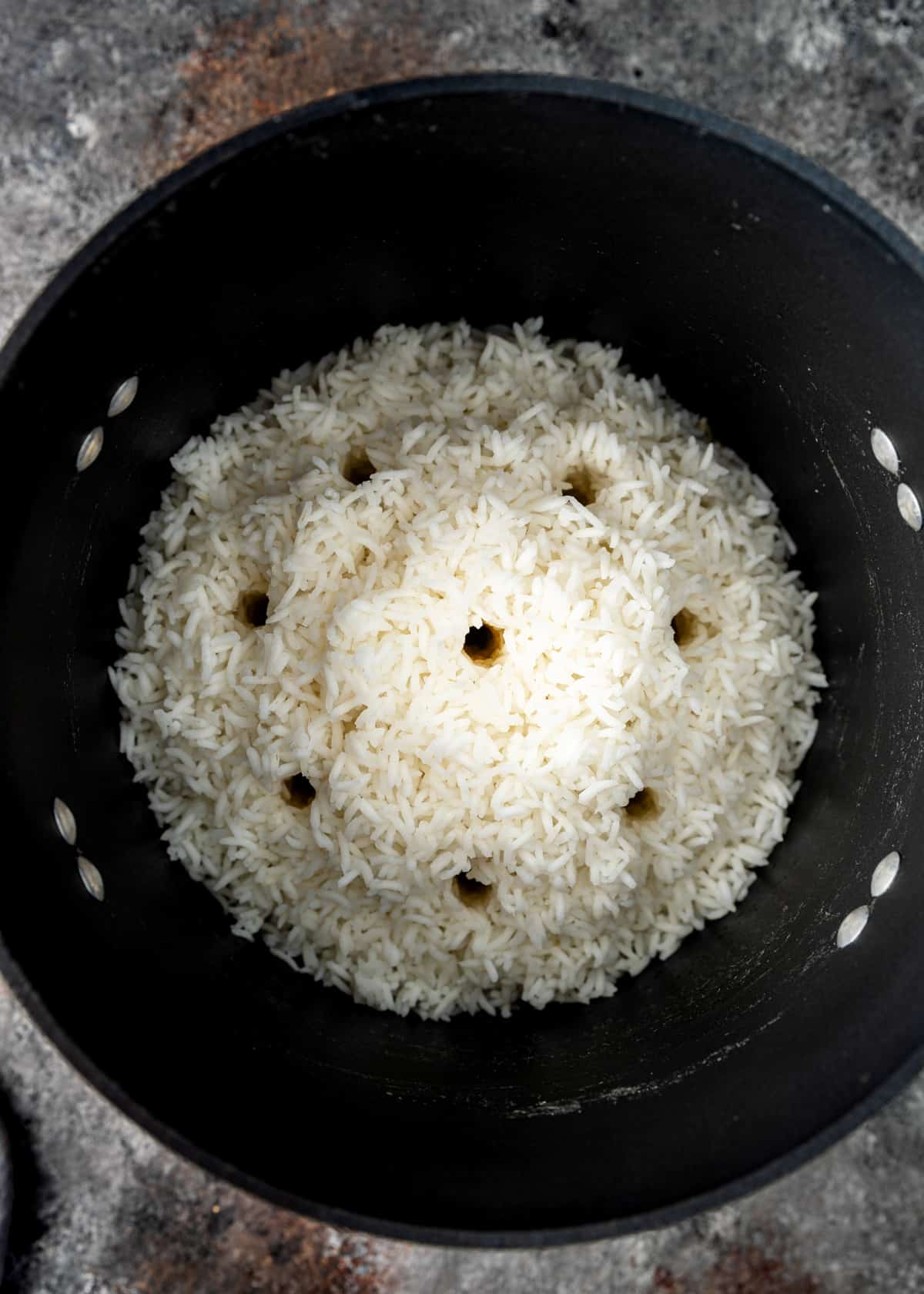
8. Make Saffron Butter. As the rice cooks, melt the other 2 tablespoons of ghee or butter in a saucepan or microwave. Combine the melted butter with the rest of the saffron water and stir to mix.
9. Drizzle & Drape. Remove the lid from the rice pot and drizzle the saffron butter mixture evenly over the rice. Then, carefully drape a kitchen towel over the top of the pot before securely replacing the lid.
10. Reduce & Rotate. Turn the heat down to low and, if available, place a heat diffuser under the pot. Cook for 30 minutes, rotating periodically for even crisping. The top rice should be tender and fluffy with the tahdig layer being golden and crispy.
11. Invert & Serve. Run a rubber spatula around the edges of the pot, then position a serving platter or tray over the pot. Quickly and confidently flip the pot upside down, listening for a swish sound as the rice releases.

TIPS AND TRICKS
- Use at least two cups of dry basmati. Tahdig rice will present the best if there is a larger amount of rice.
- Intermittently turn the pan. Turning the pan every 10 to 15 minutes while steaming will cause a more evenly browned entrée. Or, you can try a heat diffuser placed over the burner and under the pan.
- Cold water To help release the Persian crispy rice from the cooking pot, you can fill a sink with about one inch of cold water. Then, briefly set the bottom of the pot in the cold water.
Alternatively, set it on a wet kitchen towel for a few minutes before removing the food.

What Do You Eat With Tahdig?
You can enjoy Persian crispy rice as a meatless entree or serve it as a side dish with all kinds of dishes. Here are a few recommended dishes to enjoy with your tahdig:
- Lamb Shawarma (Shredded) or Lamb Koobideh Kabob
- Persian Meatballs (Koofteh) or Palestinian Fish Kofta Meatballs
- Joojeh Kabob (Persian Chicken Kabob) or Pomegranate Chicken
- Stews like Lamb Tagine with Apricots and Dates or my Instant Pot Lamb Stew (Dal Gosht )
- Steamed Carrots with Yogurt Dressing or a Shirazi Salad

Can You Reheat Tahdig?
Yes! Store any leftover Persian crispy rice in the refrigerator for up to 3 days. Once you are ready to enjoy it again, place it crispy side down in an oiled nonstick pan over medium heat. Heat it for a few minutes or until it is crispy on the outside and warm in the middle.
What Pan Is Best for Tahdig?
For the best results, I recommend a large nonstick stock pot.
It is possible to use a cast iron pot or Dutch oven if that’s what you have on hand. Just note that you might need to add a bit of extra butter or oil to prevent sticking.
Whichever pan you choose, briefly dipping the bottom of the pan in one inch of cold water before flipping will help with the release. Setting the pan on a cold wet towel for a few minutes will produce similar results.
Share this recipe on Pinterest!
Love this recipe? Share it with the world on Pinterest.
Tahdig Variations
Want to give this traditional recipe a makeover? Adding herbs while cooking is a great way to bring new life to the dish. Another popular and delicious option involves stirring additional ingredients directly into the pot.
Or, add fun and flavor to the meal by including something else thin and crisp-able to the bottom of the pan before cooking. Try any of these options for an exciting new flavor and texture.
- Bread: Pieces of lavash, Khubz, or even flour tortillas like I use in my Sabzi Polo Recipe (Persian Herb Rice)
- Potatoes peeled and sliced to ¼-inch-thickness like I use in my Lubia Polo (Iranian Rice Dish)
- Cooked noodles
- Yogurt: Add plain yogurt to the pre-cooked grain and use it at the bottom of the pan for the toasted part
- Fresh herbs: Add finely chopped cilantro or parsley

Subscribe to my Newsletter, follow me on Facebook, Pinterest, Instagram and YouTube for all my latest recipes and videos.

Persian Tahdig (Crispy Rice Recipe)
Ingredients
- 3 cups white basmati rice (See Note 1)
- Kosher salt
- 4 tbsp butter or ghee
- 1 tbsp olive oil
- 1/8 tsp ground saffron steeped in 1/4 cup warm water
- 1/2 tsp advieh
Instructions
- Using a mortar and pestle or in the palm of your hand, grind the saffron threads to a powder and mix with advieh and the water to steep and bloom. Set aside.
- Place the rice in a medium bowl, and fill it with cold water. Gently wash the rice by swishing it around with your hand, then drain. Repeat until the water runs clear, about 5 times. Cover the rice with 5 cups cold water, 2 tablespoons kosher salt, and stir. Soak the rice for at least 30 minutes.
- Fill a large stock pot or Dutch oven with 12 cups of water. Bring to a boil, and add 1/4 cup kosher salt. Drain the rice (but don’t rinse) and add it to the pot. Stir once gently and boil 4 minutes (as soon as you see the first of the rice grains pop up), and set your timer for 5 minutes (See Note 2).
- Drain rice in a colander and give it a very quick rinse with lukewarm water. Test the rice; if it’s too salty give it another quick rinse. Set aside to drain completely. Wash and dry the pot, if using the same pot.
- Set the rice pot over medium-low heat. Add 2 tablespoons of the butter (or ghee), olive oil, 1 tablespoon of the saffron water and melt the butter (or ghee). Swirl it around so it evenly covers the bottom of the pot and a little up the sides, adding more butter and/or oil if needed. Work quickly now. As soon as the oil starts sizzling, with a spatula, add enough rice to fully cover the bottom of the pot in a thin layer. Pack down the rice with the back of a spatula. This is your tahdig layer.
- Gently spoon the rest of the rice over the tahdig layer in a cone shape, making sure the tahdig layer is covered with more rice. With the handle of a wooden spoon poke a few holes in the rice without hitting the tahdig layer, this allows the steam to escape. Turn up the heat to medium, cover, and cook for 10 to 12 minutes for the tahdig to set.
- While the tahdig sets, in a small saucepan or in microwave, melt the remaining 2 tablespoons butter (or ghee) and advieh then add it to the remaining saffron water.
- Lift the lid and drizzle the remaining butter saffron mixture over the rice. Drape a kitchen towel on top of pot to catch the condensation. Place the lid firmly back on the pot, making sure the kitchen towel edges are flipped up onto the lid on top.
- Reduce the heat to low (depending on your element), and place a heat diffuser under the pot, if you have one. Cook for 30 minutes, rotating the pot a few times for even crisping, until the rice is tender and fluffy and the tahdig is crispy and golden.
- Run a rubber spatula around the inside of the pot. Place an appropriate-sized platter over the top of the pot and quickly and confidently flip the pot over. There should be a swish sound of the release of the tahdig. Alternately, you can scoop the rice, on to a platter. Gently remove the tahdig whole or in pieces, and serve it on the side.
Video
Notes
- Basmati rice is a must for true Persian rice. Recipe for Chelo ba Tahdig adapted from Naz Deravian’s Bottom of the Pot.
- What you’re looking for is a grain that is tender on the outside but still with a bite to it on the inside. This can take anywhere between 5 to 7 minutes, depending on the type of rice.
Nutrition
The information shown is an estimate provided by an online nutrition calculator. It should not be considered a substitute for a professional nutritionist’s advice.


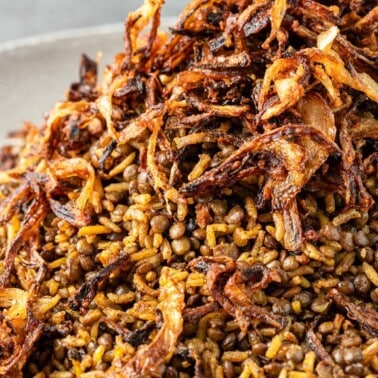
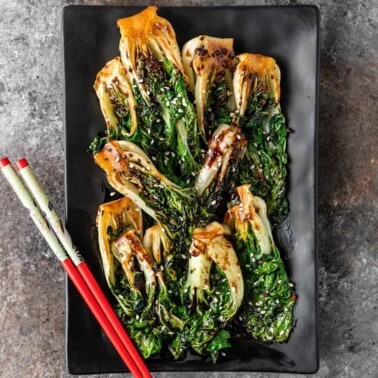
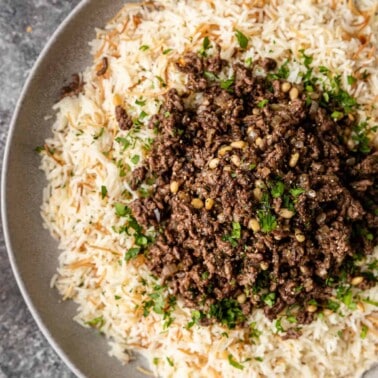
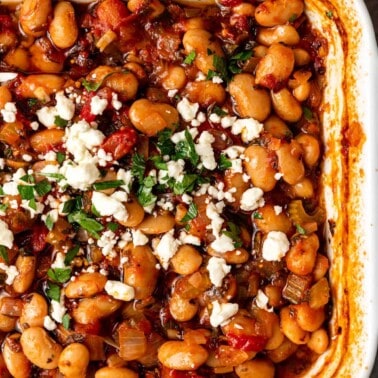








My son and I made this recipe and absolutely loved it! He’s 17 and learning to cook. Now he can make a meatball sub and your tahdig! LOL! Thanks for the recipe!
Great to read this, thanks Rachelle!
Perfect! It turned out beautiful- Made it just as written!
Fantastic Yvette!
Such a clear, and delicious recipe – turned out incredible- will make again!
Fantastic, love to read comments like this one Paula! 🙂
Something else I need to try soon. I made a version of this once, but without saffron, this sounds much tastier.
Made this tonight and it was fantastic! Rave reviews from family and friends! Thanks!!
I am so glad! Thank you for sharing!
A Persian friend used to make something similar, but used a layer of sliced potatoes to crisp on the bottom…or is that a different dish altogether? It also contained small red fruits – the closest I can find is lingonberry, which I am pretty sure is not from the Middle East. Would you know what that fruit is?
Hi there Lisa! You can use lettuce, tortillas, different thin breads, and potatoes to make that delish tahdig crust. I believe the small red fruits you are asking about are actually called barberries and can be found in most Middle Eastern or Mediterranean markets. For any ingredients or spice inquiries, check out my Pantry drop down section found in the site Menu that includes a description and link to purchase. Enjoy!
Barberry and in farsi language they called ( زرشک).
It’s called zaresh in Farsi.
Thanks Linda. 🙂
It’s pomegranate seeds!
No that would be barberries, but pomegranate seeds (arils) could also be used as well.
I forgot to mention it could be this Lubia Polo recipe! https://silkroadrecipes.com/lubia-polo/
this is incredible rice, love it
Finally a rice dish that matches the International Market food court we loved!
will be making this soon with few subs will be coomenting on your blog posts every monday wednesday and friday instead of replying to your emails Thanks Ramya
Much appreciated Ramya! 🙂